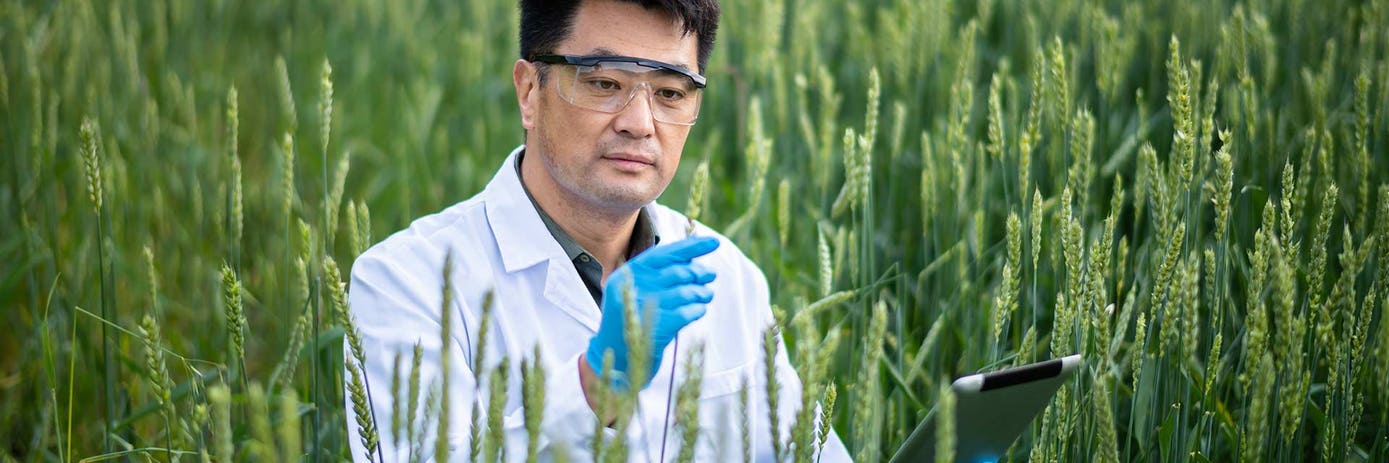Introduction
The field of agrigenomics has undergone a remarkable transformation over the past two decades, changing our understanding of plant and animal genetics in agriculture. This blog post explores the journey from microarray-based technologies to the cutting-edge Next-Generation Sequencing (NGS) approaches, highlighting the advancements that have shaped modern agricultural research and breeding programs.
In the early 2000s, microarray technology emerged as a powerful tool for studying gene expression and genetic variation in crops and livestock. These DNA chips allowed researchers to analyse thousands of genetic markers simultaneously, providing valuable insights into traits of agricultural importance. Microarrays played a crucial role in identifying quantitative trait loci (QTL) and developing marker-assisted selection strategies for crop improvement.
However, microarrays had limitations, including the need for prior knowledge of genetic sequences, high costs for custom designs, and restricted ability to detect novel variants. The arrival of Next-Generation Sequencing (NGS) marked a paradigm shift in agrigenomics. NGS offered unprecedented throughput, allowing researchers to sequence entire genomes rapidly. This breakthrough opened new avenues for exploring genetic diversity, discovering novel traits, and accelerating breeding programs.
NGS-based approaches in agrigenomics
Low-Pass Whole Genome Sequencing (LP-WGS)
This approach involves sequencing the entire genome at low coverage (typically 0.5x to 5x). Combined with imputation analysis, LP-WGS has emerged as a cost-effective alternative to traditional high-coverage sequencing (≥30x), particularly valuable in large-scale population studies where cost considerations are crucial.
Imputation analysis is an indispensable tool in modern agrigenomics, allowing researchers to infer missing genotypes and increase the resolution of genetic maps. By leveraging reference panels and statistical algorithms, imputation can fill in gaps in LP-WGS sequencing data, effectively boosting the information content with reasonable confidence, and without additional sequencing costs.
In crop breeding, imputation has enabled the development of high-density genetic maps from sparse marker data, facilitating more accurate QTL mapping and genomic selection. For example, recent studies in maize and wheat have demonstrated the power of imputation in enhancing the accuracy of genomic prediction models, leading to more efficient selection of superior breeding lines.
Targeted Approaches
While whole-genome sequencing provides a comprehensive view of genetic variation, targeted approaches offer a focused alternative for specific research questions. These methods include:
- Exome Sequencing: by focusing on protein-coding regions, it allows researchers interrogating functional variants that directly impact traits of interest. This approach has been successfully applied in identifying disease resistance genes in crops and uncovering causative mutations for important agricultural traits.
- Small panel (Amplicon/hybridization enrichment) Sequencing: this method targets specific genomic regions of interest, enabling high-throughput genotyping of known variants or the discovery of new alleles in diverse germplasm collections. This approach has been applied in marker-assisted selection, genetic diversity studies, and pathogen detection in agricultural systems.
Benefits of NGS in agrigenomics
The transition from microarrays to NGS-based approaches has had a profound impact on agricultural research and breeding programs. Some key benefits include:
- Accelerated crop improvement: NGS technologies have enabled the rapid identification of beneficial alleles and the development of molecular markers for traits of agronomic importance, leading to faster and more precise breeding cycles.
- Enhanced genetic diversity characterization: Whole-genome and targeted sequencing approaches have revealed unprecedented levels of genetic diversity in crop and livestock populations, providing valuable resources for breeding and conservation efforts.
- Improved genomic selection: The availability of high-density marker data from NGS platforms has significantly enhanced the accuracy of genomic prediction models, allowing breeders to make more informed selection decisions.
- Deeper understanding of complex traits: NGS-based approaches have facilitated the dissection of complex traits governed by multiple genes and environmental interactions, leading to insights into crop adaptation and resilience.
As sequencing technologies continue to advance and analytical methods become more sophisticated, we can expect further innovations in agrigenomics. These developments will probably play an important role in addressing global challenges such as food security, climate change adaptation, and sustainable agriculture in the years to come.
Please check how Revvity solutions are contributing to accelerate the pace of agrigenomics with end to end solutions for NGS based applications.
References
- Ladejobi, O., et al. (2023). "Imputation to whole-genome sequence increases the power of genome wide association studies for agronomic traits in wheat." G3 Genes|Genomes|Genetics, 13(3), jkad048.
- Varshney, R.K., et al. (2023). "Crop genomics for food security and climate resilience." Nature Plants, 9(5), 600-614.
- Wang, H., et al. (2021). "Low-coverage sequencing cost-effectively delivers genome-wide genetic diversity information in large populations." Plant Biotechnology Journal, 19(5), 857-870.
- Gao, L., et al. (2021). "Imputation of missing genotypes from low- to high-density SNP panels in diverse wheat lines." Theoretical and Applied Genetics, 134, 2235-2251.
- Varshney, R.K., et al. (2021). "Fast-forward breeding for a food-secure world." Trends in Genetics, 37(11), 1124-1136.
- Rasheed, A., et al. (2021). "Crop breeding chips and genotyping platforms: progress, challenges, and perspectives." Molecular Plant, 14(3), 389-407.
- Hu, Y., et al. (2020). "Gossypium barbadense and Gossypium hirsutum genomes provide insights into the origin and evolution of allotetraploid cotton." Nature Genetics, 52, 516-524.
- Scheben, A., et al. (2020). "Capturing genetic variation in crops: from genomics to machine learning." Annual Review of Plant Biology, 71, 539-565.
- Bayer, P.E., et al. (2020). "Capturing genetic variation in crops: from genomics to machine learning." Annual Review of Plant Biology, 71, 539-565.
- Tardieu, F., et al. (2020). "Plant phenomics, from sensors to knowledge." Current Biology, 30(12), R708-R725.
- Hickey, L.T., et al. (2019). "Breeding crops to feed 10 billion." Nature Biotechnology, 37, 744-754.
For research use only. Not for use in diagnostic procedures.

































